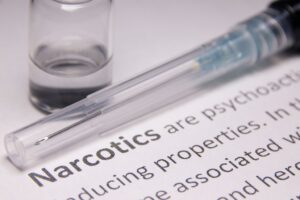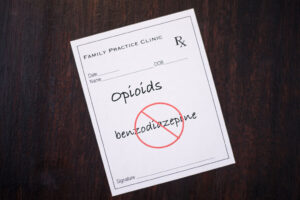
Understanding Opioid Narcotics: Risks, Treatment, and Recovery
Opioid narcotics, potent substances used for pain management, have become a focal point of public health discussions due to their high potential for addiction and
Used to treat mild to moderate pain, codeine is a narcotic pain reliever that can be habit-forming. Therefore, individuals should take codeine exactly as prescribed by a doctor. Taking it in larger amounts than what is prescribed can be dangerous. Patients should closely follow directions on the prescription label and they should not be take codeine longer than recommended. Codeine is also a drug of abuse so users should keep track of their prescription and safeguard it at all times. Misuse of codeine could lead to an overdose which can be marked by extreme drowsiness, confusion, cold and clammy skin, small pupils, weak pulse, fainting and shallow breathing.
Addiction to opiate painkillers is unfortunately commonplace, though they can be taken safely. It is imperative that patients know the exact amount and frequency they should be taking the drug. Many people become physically dependent to opiate medications though no fault of their own. In some cases, patients build up a tolerance to the drug, meaning they have to take increasingly larger amounts to achieve the same relief. Patients should talk to their doctors immediately if they feel their prescription is not working as well as it once did. One side effect of codeine is a euphoric or dreamy feeling that can blunt emotional pain. This can also prompt patients to take more to help them feel better.
Speak Confidentially
with an opiate detox treatment expert.
People can take codeine safely for short periods of time according to their prescription. However, there are certain signs to watch for if you believe you or someone you know has become addicted. Compulsive or uncontrollable use is one sign. Another sure sign of physical dependence is the onset of withdrawal. This takes place when a patient attempts to abruptly stop use after a prolonged period. Patients should always gradually wean from opiate medication under supervision from a doctor.
Withdrawal symptoms associated with codeine use include weakness, yawning, runny nose, sweating, headaches, muscle pain and twitches, irregular heartbeat, nausea, vomiting, fever and insomnia. Other signs of codeine addiction can include preoccupation with obtaining and consuming the drug, escalating and chronic use, impaired control over drug use and strong cravings that don’t subside unless you take the drug. Continuing to use codeine despite negative consequences can also be a strong indicator of a problem.
Prolonged use of opiates including codeine comes with the risk of addiction. Mental and physical dependency to codeine can develop quickly with repeated use. With the exception of some chronic illnesses, most narcotic pain medications aren’t meant for long-term use. Waismann Method offers a safe, responsible and humane treatment for codeine addiction. Our codeine detox program is performed in a hospital under the constant care of one of our medical directors. The process is a rapid drug detox using deep sedation. The Waismann Method allows patients to return to a productive life within days, eliminating the need to spend weeks or months in a rehabilitation or hospital setting.
Speak With an Addiction Specialist
Exceptional Care & Better Outcome. Get In Touch With Us Today!
What's New at Waismann Method®

Opioid narcotics, potent substances used for pain management, have become a focal point of public health discussions due to their high potential for addiction and

In today’s fast-paced world, the conversation around prescription medication misuse, particularly the mixing of benzodiazepines (benzos) and opiates, has become more crucial than ever. While

Welcome to your comprehensive guide on safely navigating the world of OTC (over-the-counter) drugs. In this essential read, we dive into critical tips and strategies



Get Newsletter Updates from Waismann Method®
"*" indicates required fields
We are available 7 days a week
DISCLAIMER: The text presented on this page is not a substitute for professional medical advice. It is for your information only and may not represent your true individual medical situation. Do not hesitate to consult your healthcare provider if you have any questions or concerns. Do not use this information to diagnose or treat a health problem or disease without consulting a qualified healthcare professional. Be advised that Opiates.com articles are derived from various sources and may not reflect your own country’s regulations.